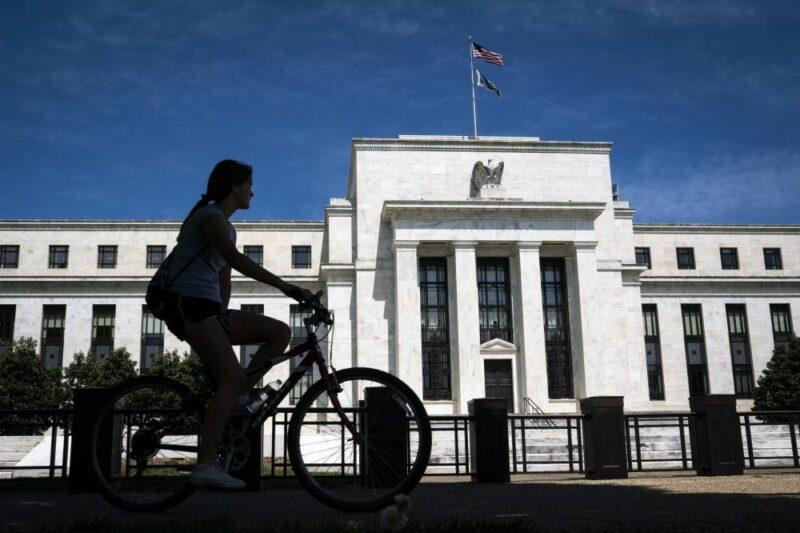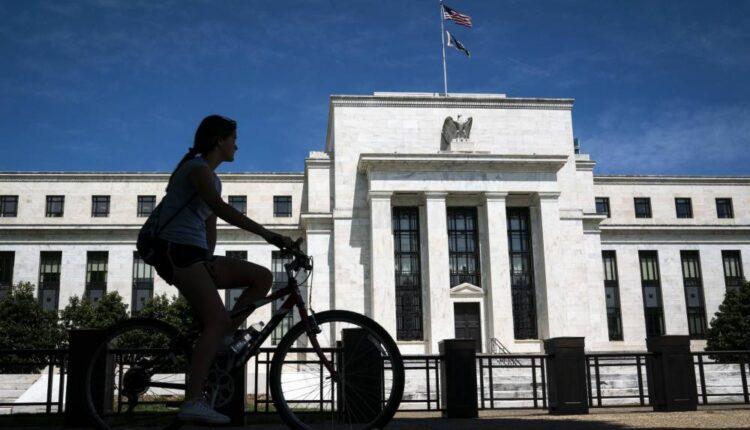
The central bank has boosted efforts to fend off a depression.
On Thursday, the Federal Reserve announced its plans to inject another $2.3 trillion into the U.S. economy to mitigate the impact of the coronavirus. This comes after jobless claims surged an additional 6.6 million, bringing the total to more than 16 million within the last three weeks.
"We are deploying these lending powers to an unprecedented extent, enabled in large part by the financial backing from Congress and the Treasury," said Fed Chairman Jerome Powell. "We will continue to use these powers forcefully, proactively, and aggressively, until we're confident that we are solidly on the road to recovery."
Here is what three experts have to say.
Earnings season indicators
Kate Moore, head of thematic strategy for BlackRock's Global Allocation investment team, says earnings season will indicate what it will take for companies to recover.
"All these ways, the policy programs and support, are really encouraging investors. We've seen strong performance from the market over recent days. A lot of that has been based on better health news, but also this promise of continued policy support. I think this announcement … gives that to us. The other thing that investors are going to be really focused on, frankly, is the guidance from companies coming out of earnings next week. You know, we have the first-quarter earnings starting off, and while we don't expect companies to give firm guidance for second quarter or third quarter, because we don't know exactly what the path of the virus will look like, the tone from companies and their experience in their first quarter will tell people a lot about what it's going to take to recover. And I think that'll make it a lot easier for investors to start pricing assets. I'm modestly optimistic; we're still running a relatively high level of cash to our history, but we're looking for opportunities. And I have to say, every time we get a big bank policy response like this, and the market is going to react a little bit positively, it shortens the time and dampens the pain. And it leads us to believe that we can get back to something that is closer to normal activity over future quarters instead of future years."
'Powell is the man'
Jim Cramer, host of CNBC's "Mad Money," says he agrees with the decisions Powell is making.
"The Fed is not going to be the reason why we go into a depression. They want to stop that; they want to make it a recession. Sometimes, look, I was critical — just a couple years ago when Powell was talking about tightening, when the economy was actually getting weaker. [Now] he's so far ahead of the curve that it will be studied, we will be studying this period. And we will say, unlike 1937 when the Fed got tight and they threw us back into depression, we will say that Jerome Powell, after being a little unsure about how to handle things, decided to go out front and said, 'We will make it so that if you want to make loans, we'll even let you make mistakes, we'll keep you in business no matter what. Hospitals, states, we will give you the money. Small, medium-sized businesses, if you do and again [need] another $250 billion because they ran out of money for this great program, we're there for you.' So … Powell is the man."
U-shaped rebound
Art Cashin, director of floor operations at UBS, says the rally is in part due to the Fed support and the outlook on oil production.
"We came in this morning, we had about a 50% retracement. Historically that's what traders expect to see. Now they thought they would see the market, become a bit more challenged, that's where it was going. Instead we got the surprise from the Fed, and with the Fed ready to be all in that got them a little bit excited, and that's why we're having this rally. Secondarily, you're getting a minor boost from a supposed agreement on cutting back oil production. I'm of the skeptic group that thinks that the drop-off in demand is so short that there is very little that the producers can do to cut the production back to meet it. So, I think oil may try to rebound here a little bit, but I think it's suspect. I think the 50% retracement … is probably in order … certainly with a U-shaped rebound, I don't know if it's fully with the L shape, and we'll have to see where we go from here. The key is, if you can get something to treat this disease, the market could continue to rally very sharply. If instead you're going to just hope for the disease to calm down, that's going to raise some questions."
Disclaimer
Source: cnbc.com

